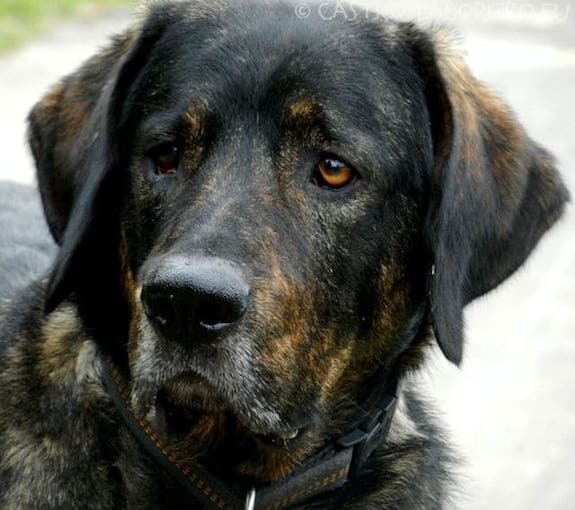
It’s doesn’t quite have the same ring as the “Village of the Damned,” but a town in the Viana do Castelo District of Portugal is named Castro Laboreiro, or Village of the laborers. The names of Portugal’s eight native breeds are all derived from their place of origin, and the Cão de Castro Laboreiro, or Portuguese Cattle dog, gets its name from that village.
For centuries, these dogs worked alongside livestock farmers in the mountains to protect livestock from the Iberian wolf. Foolishly, farmers turned to shooting and poisoning the wolves at the turn of the 20th century, and the Cão de Castro Laboreiro, now out of a job, fell out of favor. The wolves became protected by law in 1988, and farmers struggled to co-exist with them.
It finally dawned on someone that one of the country’s oldest breeds may be a solution. The Portuguese wolf conservation organization, Grupo Lobo, encouraged farmers to use breeds like the Cao de Castro Laboreiro (also known as the Castro Laboreiro) not only because they were an effective deterrent to the wolves, but because they easily negotiated the tall, wild mountains as they moved livestock from one pasture to another, and most of the time, they did it without direction from a shepherd. It took a special disposition to work in the isolation of this environment (the first dirt road wasn’t completed until in 1948), but the Cão de Castro Laboreiro was a natural.
Interestingly, the breed gained a new role as a protector of humans. Men started emigrating (mostly to France) to earn a living, but it meant leaving their families behind and alone to care for the animals and their property. The dogs developed a very important role in the custody of valued family and property.
The Cão de Castro Laboreiro was actually first shown in 1914, and while it has grown a modicum of popularity, it has yet to be recognized by the AKC. The breed is recognized by the Portuguese Kennel Club, the United Kennel Club in 2006, and the FCI in 2011, but the dogs are common only in a limited range at variable altitudes in the northern part of Portugal. As of 1999, about 100 dogs were entered in the stud book, but 95 percent of the dogs living in the Castro area are not registered in the stud book. One source states that the total worldwide population of only about 200–500 purebred dogs.
Enjoy this brief video of a couple of Cao de Castro Laboreiros horsing around:
Image found on Pinterest and happily credited upon receipt of information

“Challenge me, you little punk, I don’t think so….”
Strikes me as a very stable, utilitarian farm dog, like many of the rare breeds just being noticed or “rediscovered”. Good story.
What a beauty. He looks like one of our dogs that has some Newfoundland and Dalmatian in him. I came across this site as we had our first customer with a Cão de Castro Laboreiro / Portuguese Watchdog today and I wanted to understand more about it. Either way, that’s ONE in nearly four years of over 40,000 customers. Rare indeed. Thanks! Tagmaster